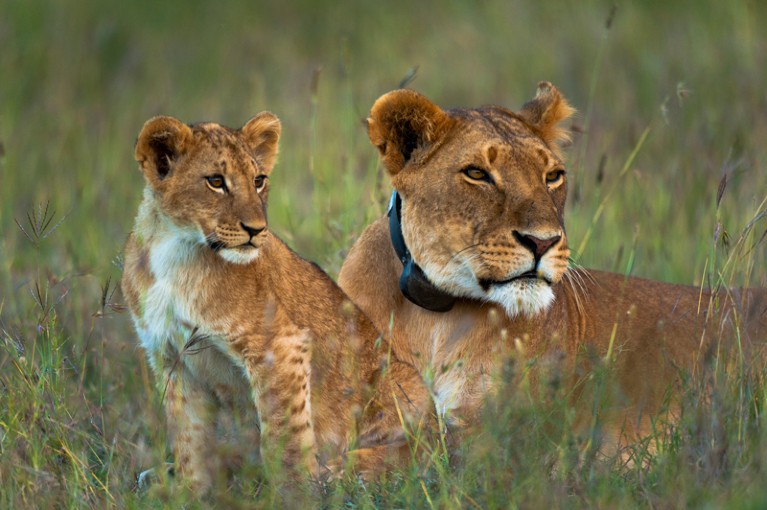
Technology and data can protect endangered species — but can also help hunters.Credit: Ian Cumming/Getty
From 2013 to 2017, listening to the gentle ‘ding ding’ of the night parrot was forbidden. Long feared extinct, when the bird (Pezoporus occidentalis) was rediscovered, officials in Australia decided to restrict both location data and recordings of its signature call for fear that poachers and enthusiasts might use the information to track and disturb the creatures. Yet when the recordings were declassified and shared last year, conservationists were delighted by what followed: at least three new populations have since been discovered by people using the call to recognize the birds.
Since the bird’s rediscovery in 2013, the Australian government has put in place proper conservation safeguards, such as making it illegal to approach the creature’s habitat. It’s a good example of authorities weighing up the risks and benefits of publicizing the discovery of a rare species and then reaching a sensible compromise. That kind of decision process is increasingly in demand, as data sources and sharing proliferate beyond conventional academic audiences in ways that risk, for example, helping hunters and illegal wildlife traders to track down target species.
In a Perspective published this week in Nature Ecology & Evolution (A. I. T. Tulloch et al. Nature Ecol. Evol. 2, 1209–1217; 2018), conservation experts offer a way to help scientists and officials to decide when to publish such sensitive information — and when not to. It’s the latest development in an ongoing debate that pits advocates of open data against those who take a harder line and want more restrictions. The authors warn that a default position in which location data are withheld if a species is identified as being of high biological significance and under high threat — as recommended by the Global Biodiversity Information Facility — risks missing out on the benefits of data sharing.
To aim for a more balanced approach, the scientists drew up a decision tree to help people judge what to do with information gained from wildlife monitoring and surveys. A series of steps asks questions such as “Could data be used to mitigate threats to species?” and “Would sharing location data increase risk of species decline through increased visitation?” In some cases — fish spawning locations for one, because the fishing industry would love to target them — the recommendation is to keep everything from the name of a species to its location under wraps. But in other cases, the need for secrecy is trumped by the possible benefits of transparency. Open data could help local communities fight to protect a habitat when development is threatening a species.
Ayesha Tulloch, an environmental scientist at the University of Sydney in Australia who led the analysis, says her team was surprised by the low number of examples they tried that produced a ‘don’t publish’ decision. That, she adds, could help scientists to get funding for projects that might otherwise be rejected because of the restrictions expected to be placed on the eventual results. Several government departments in Australia and New Zealand — including those who have historically kept data from the public — have already said that they are interested in using the decision framework to help set policy.
Such discussions are timely. Scientists are poised to launch a satellite-tracking project that will massively increase the number of species worldwide whose locations can be traced in near-real time. Earlier this year, a satellite antenna called ICARUS — International Cooperation for Animal Research Using Space — was attached to the International Space Station. Combined with lightweight animal tags, it will allow researchers to follow the long-range movements of much smaller species than has previously been possible. For some species, that information could place them at greater risk. There are already concerns that unethical safari guides and hunters have hacked into the biotagging systems used to keep tabs on endangered animals such as lions (S. J. Cooke et al. Conserv. Biol. 31, 1205–1207; 2017).
About one in six of the threatened species listed by the International Union for Conservation of Nature are classed as data-deficient, which means conservationists and scientists face a struggle to perform basic analyses such as population modelling and to work out which habitats must be preserved. Data bring power. But they also bring responsibility. This new decision-making tool could help to generate the former while respecting the latter.
